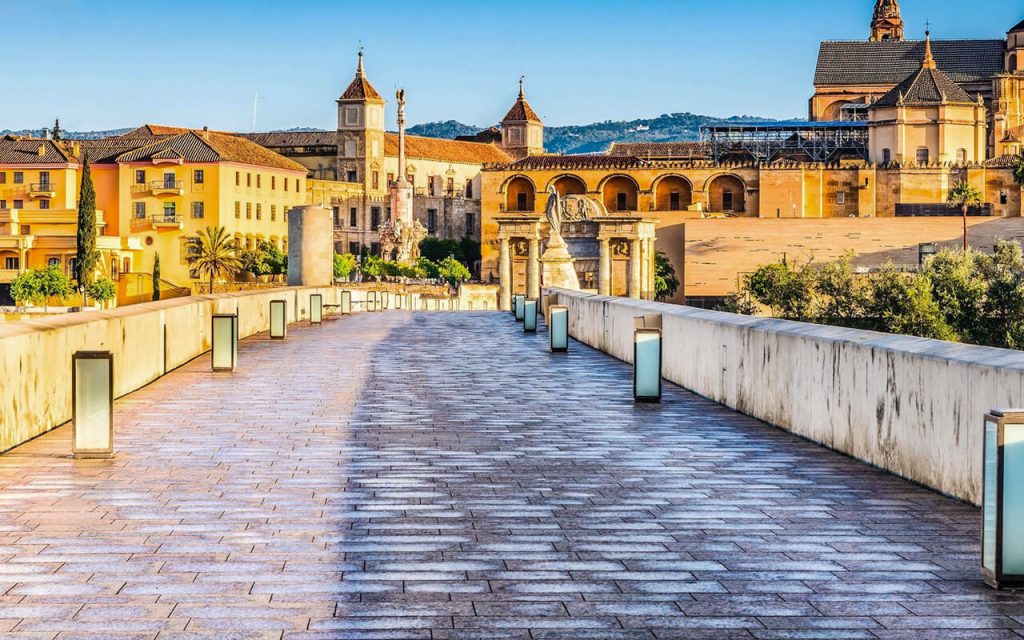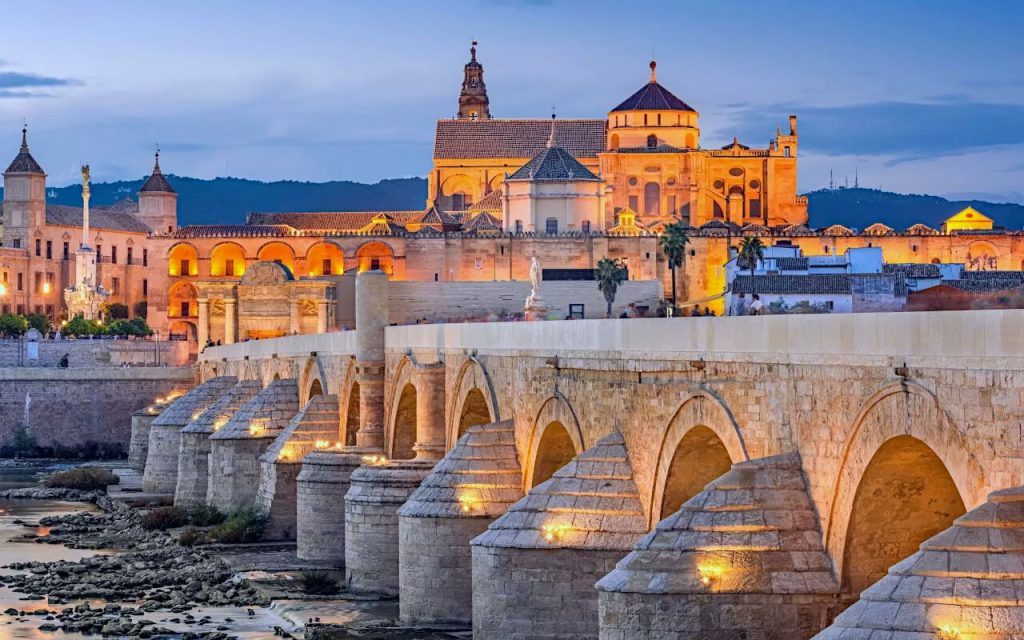Índice Contenido
Undoubtedly, the Roman Bridge of Cordoba is one of the most symbolic monuments of the city as it has a privileged location and views of the Guadalquivir River and the Mosque in the background. It is also considered an “Asset of Cultural Interest”.
It is a 331-meter long bridge built during the first century A.D. during the Roman domination and, although it has been renovated several times, it is today a unique tourist enclave with spectacular views of the old town of Cordoba.
Location of the Roman Bridge of Cordoba
The Roman Bridge is located at the southern end of the old town of Cordoba, joining the Ronda de Isasa and the Arco del Triunfo on one side with the Torre de la Calahorra on the other. It is also located in a privileged environment, the Sotos de la Albolafia, a natural area that is home to more than 120 different types of birds, some of which are in danger of extinction.
How to get to the Roman Bridge of Cordoba
- From Renfe train station: Line 3
- From the Eurostars Palace Hotel: Walking
- From Tendillas square: Walking
From the Córdoba Center Hotel: Lines 3 and 7

History of the Roman Bridge of Cordoba
Cordoba was founded by the Romans in the 1st century BC and soon became a strategic enclave of great importance for the province Hispania Ulterior. It is believed that already in the 1st century BC the citizens of Cordoba built a bridge made of wood that would serve as the basis for the current bridge. In the first century A.D. the construction of the bridge was completed, consisting of 17 arches, although currently only 16 remain. It has been for many centuries an essential element for the entrance to the city, belonging with great probability to the so-called Via Augusta, a Roman road that crossed the peninsula to Rome, the capital of the empire.

Architecture of the Roman Bridge of Cordoba
It is an arch bridge built with solid stone. It is more than 300 meters long and 9 meters wide. Although it was built in Roman times, currently only 2 of the 17 original arches remain (arches 14 and 15). It has undergone numerous reforms throughout history, adding elements such as the tower of the Calahorra or the statue of San Miguel that guards it. Since 2004, this bridge can only be crossed by pedestrians,
The statue of San Rafael
In the year 1651 this work of the artist Bernabé Gómez del Río was incorporated to the bridge, as a symbol of blessing to all pedestrians who cross the bridge. It is the oldest image of San Rafael in the city.
Reconstructions of the Roman Bridge of Cordoba
The Roman bridge of Cordoba has been rebuilt on numerous occasions throughout history, mainly due to the wear and tear caused by the water of the river and the damages suffered in times of war. Arab features can be seen in some of the reconstructions. With the reconquest, two external elements were created to the bridge that exalt it even more: The tower of the Calahorra and the Puerta del Puente, popularly known as “Arco del Triunfo” (Triumphal Arch).
Photos of the Roman Bridge of Cordoba
Frequently asked questions about the Roman Bridge of Cordoba
When was the Roman Bridge of Cordoba built?
Although there was an original bridge from the 1st century BC, it was not until the 1st century AD that the construction of the Roman Bridge, as we know it today, was completed.
What type of construction is the Roman Bridge of Cordoba?
It is a 331 meter long bridge with 17 arches made of limestone brought directly from the Sierra de Córdoba.
Who created the Roman Bridge of Cordoba?
In the first century A.D., Cordoba belonged to the Roman Empire, so it was the Romans who built the famous bridge.
Where is the Roman bridge of Cordoba located?
The Roman bridge of Cordoba crosses the Guadalquivir River, connecting the Ronda de Isasa and the old part of the city with the Torre de la Calahorra and the Campo de la Verdad neighborhood.

